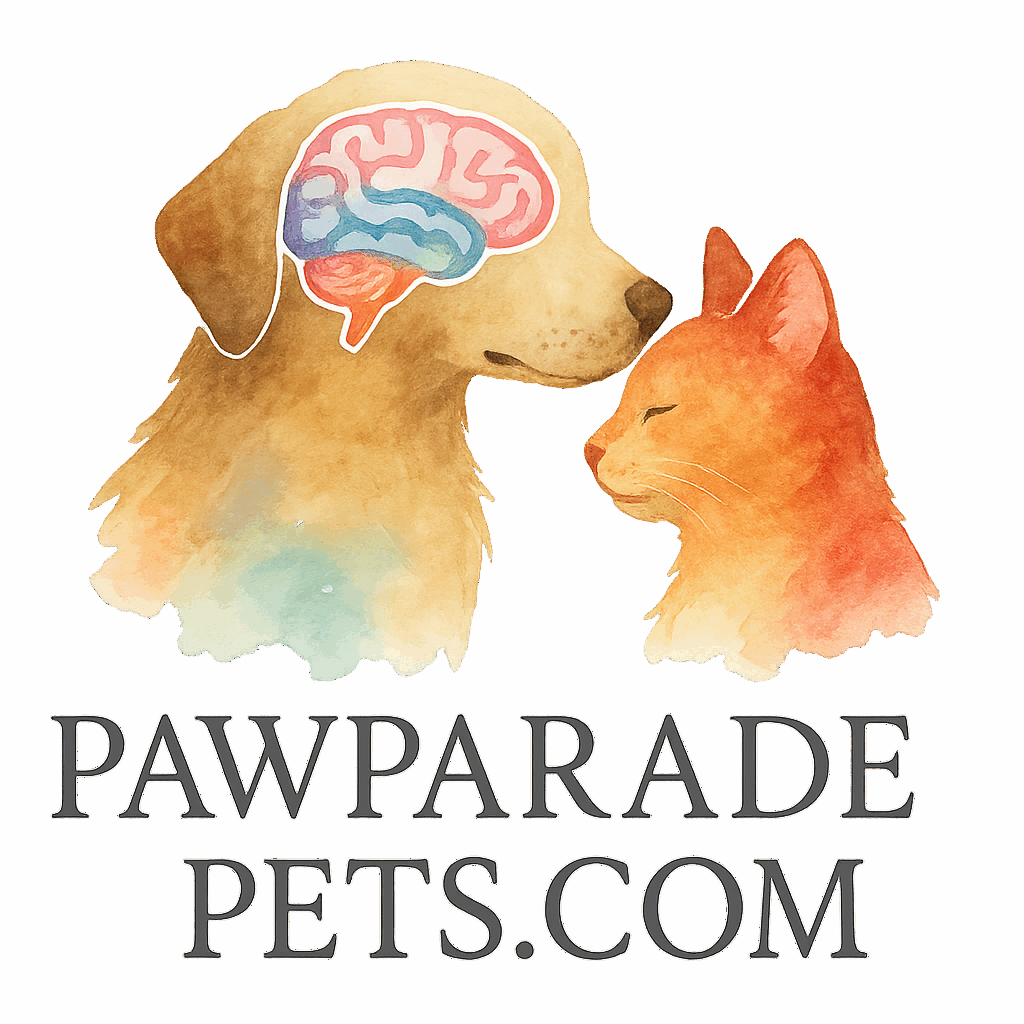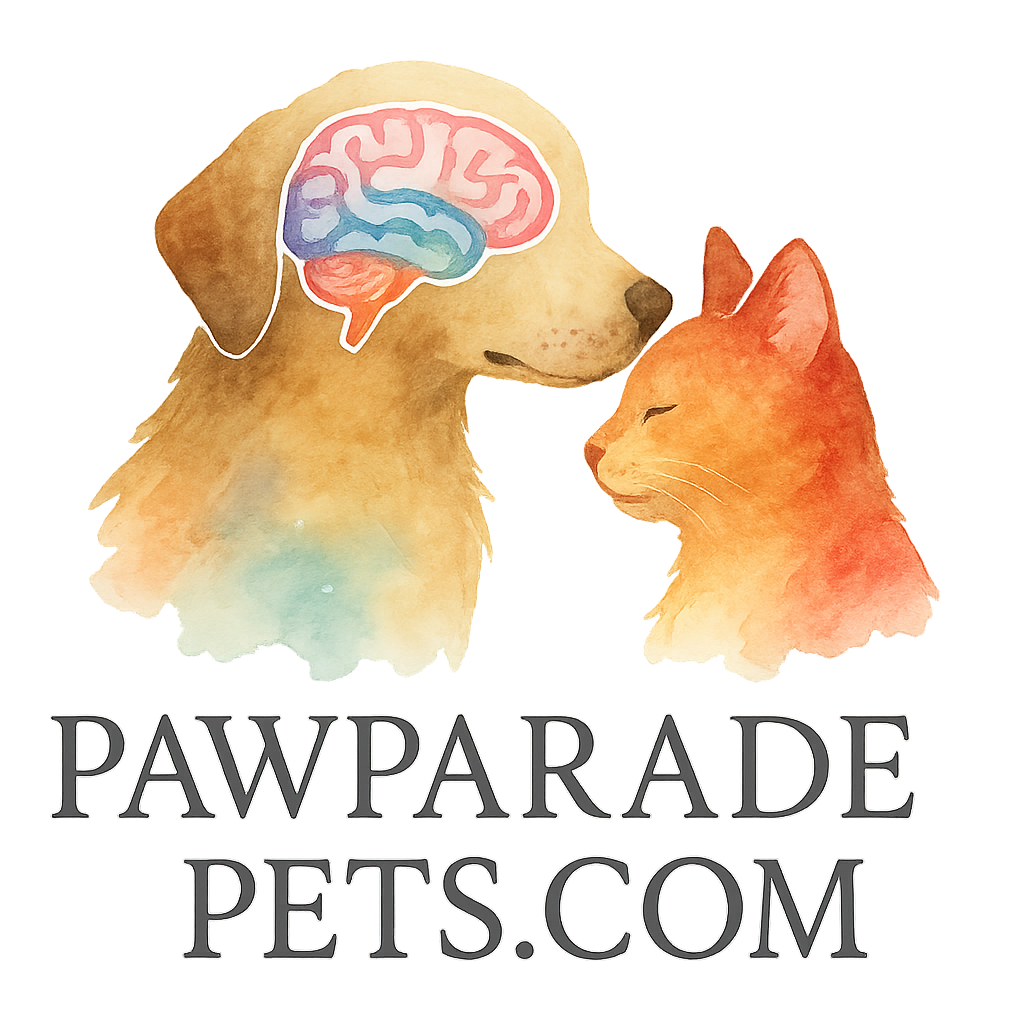When we think about keeping our pets happy, we usually focus on food, exercise, and belly rubs. But did you know your furry (or feathered!) friend also needs mental exercise to thrive? Just like humans, pets need brain stimulation to stay sharp, reduce stress, and live their best lives. One of the easiest—and most fun—ways to give your pet a mental workout is with puzzle games. 🧠🐶🐱
In this article, we’ll explore 6 puzzle games that improve pets’ problem-solving skills, why they work, and how to introduce them into your pet’s routine.
Why Mental Stimulation Matters for Pets
The Science Behind Brain Training for Pets
Think of your pet’s brain like a muscle—it needs regular workouts to stay strong. According to the experts at Paw Parade Pets, mental enrichment improves focus, memory, and even emotional well-being.
Cognitive Enrichment: More Than Just Play
Interactive play and puzzle-solving help reduce boredom and behavioral issues. Mental challenges can mimic natural instincts like hunting, sniffing, and problem-solving, fulfilling your pet’s internal needs.
Benefits of Puzzle Games for Pets
Boosts Cognitive Function and Memory
Puzzle toys encourage your pet to think, experiment, and learn. Over time, this strengthens their memory and sharpens decision-making.
Enhances Behavior and Reduces Anxiety
Many pets act out because they’re bored or anxious. Providing them with brain stimulation can prevent destructive behaviors like chewing, digging, and barking. Learn more about behavior support on Paw Parade’s behavior and obedience section.
Encourages Independence and Exploration
Puzzle games encourage pets to explore, problem-solve independently, and stay occupied—even when you’re not home.
What Makes a Good Puzzle Game for Pets?
Challenge Levels and Progression
A good game challenges your pet just enough to keep it fun—not frustrating. Look for toys with adjustable levels or complexity, just like those found in the advanced cognitive challenges section.
Safety, Durability, and Engagement
Choose toys made from pet-safe materials that can withstand chewing, pawing, and slobbering. Bonus points if they squeak, bounce, or hide treats!
Top 6 Puzzle Games That Sharpen Pet Problem-Solving
1. Nina Ottosson Dog Tornado
How It Works
This rotating puzzle features multiple layers and hidden treat compartments. Your dog has to spin the layers to access the snacks.
Why It’s Great for Smart Pets
It’s ideal for dogs that need a moderate to high challenge and love food-based puzzles.
2. Outward Hound Hide-A-Squirrel
Fun Meets Function
This plush toy comes with a soft tree trunk and squeaky squirrels. Your dog has to figure out how to pull the squirrels out.
Perfect for Hunting Instincts
This toy taps into natural prey drive while being gentle and safe. It’s also perfect for fetch-loving dogs!
3. Trixie Pet Puzzle Tower
Multi-Tiered Brain Challenge
This tower-style puzzle requires pets to move pegs and sliders to release treats from different levels.
Gradual Difficulty Increases
Start with the easy levels and work your way up as your pet improves their skills.

4. Kong Classic with Treat-Filled Challenges
Old-School Brain Game
A classic for a reason. Fill it with peanut butter, kibble, or frozen treats. Your pet has to bounce, chew, and roll it to get the rewards.
Best for Chewers
This toy satisfies both mental and chewing needs—great for teething puppies or power chewers.
5. Snuffle Mats (DIY or Pre-Made)
Natural Foraging Experience
Hide treats in the folds of fabric and let your pet sniff and search them out—perfect for dogs and cats alike.
Great for Slow Feeders
If your pet gobbles food too fast, this encourages them to slow down and think.
6. Interactive Smart Treat Dispensers
Tech Meets Training
These gadgets use motion sensors or timers to release treats. Some even connect to your phone!
Keeps Pets Engaged Even When Alone
Ideal for long workdays. Keep your pet active with options from the tools and toys for brain training collection.
How to Introduce Puzzle Games Effectively
Start Simple and Observe
Not every pet gets the hang of puzzles right away. Begin with easy ones and supervise closely. Let them sniff, nudge, and learn at their own pace.
Avoid Frustration, Build Success
If your pet gets too frustrated, they might lose interest. Celebrate small wins with treats and praise to keep motivation high.
Brain Training Isn’t Just for Dogs
Puzzle Play for Cats, Birds, and Small Mammals
Cats love puzzle feeders too! And don’t forget about parrots, rabbits, or even guinea pigs—many enjoy simple enrichment toys and games.
Variety Is Key to Engagement
Switch up the games to avoid boredom. Use a mix of textures, sounds, and styles. For more ideas, browse the brain stimulation tag.
Combine Puzzle Games with Training Activities
Mix with Obedience Commands
Use puzzle toys during training sessions to reinforce commands like “sit,” “wait,” or “find it.” This improves obedience while stimulating the brain.
Enhance with Interactive Toys
Look for toys that combine puzzles with movement or sound. Check out Paw Parade’s tags on interactive and smart pet play.
Where to Find More Brain-Boosting Tools
Explore More at PawParadePets
If you’re serious about improving your pet’s brainpower, Paw Parade Pets has everything you need—from beginner games to advanced gear.
Browse Categories and Tags for Smart Pet Fun
Explore tags like games, fun, tech, toys, and training to discover new favorites.
Conclusion
Puzzle games are more than toys—they’re keys to unlocking your pet’s full potential. By challenging your pet with the right puzzles, you’re boosting their brain, improving their behavior, and giving them a more fulfilling life. Whether you have a clever canine or a curious cat, there’s a puzzle game out there that can engage their mind and make their tail wag. 🐾🧠
Ready to upgrade your pet’s playtime? Visit Paw Parade Pets today for tools, tips, and toys that turn ordinary pets into brainiacs.
FAQs
1. What age should I start using puzzle toys with my pet?
You can start as early as a few months old, especially with simple puzzles that offer food rewards.
2. Are puzzle toys only for dogs?
Nope! Cats, parrots, rabbits, and even rats can enjoy puzzle toys too.
3. How often should I let my pet play with puzzles?
Daily is best, but even a few times a week can make a big difference.
4. My pet gets frustrated. What should I do?
Start with easier games, supervise closely, and offer encouragement and treats.
5. Can puzzle games help with separation anxiety?
Yes! They keep pets engaged when you’re away and reduce destructive behavior.
6. How do I clean puzzle toys?
Most are washable with warm soapy water. Always check manufacturer instructions.
7. Where can I find more enrichment ideas?
Check out Paw Parade Pets and explore tags like training, devices, and engagement.


